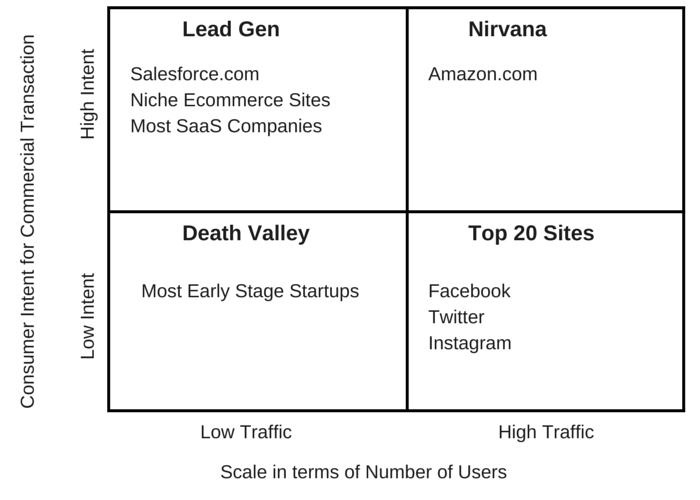
Your value proposition matters. It is the face of your product and how customers perceive your company. But most founders decide to create their value proposition after they create their product.
Why is that?
We previously released a post, "How to have your customers build your product for you," that covered a variety of topics, including the importance of your value proposition. In the short guide, the first step was to create your value proposition before you create your product. This post is a deeper dive into the subject of value propositions and how you can create one that won't land your company in the startup graveyard.
In order to create a successful value proposition for your company you will need to identify three elements: What you want, what your customer wants, and what will generate revenue. Determining these three components will help your company avoid potential obstacles in the future and stay on the path to success. Here is how you can get started.
What You Want
What Motivates You?
What most founders don’t realize is the importance of creating a company that agrees with their personal mission. You are going to be the one that drives the company, and if you don’t even like it, how can you expect your customers to?
First and foremost, you need to create a product that you can see yourself working on for the next 5-10 years of your life.
Why?
Because that is how long it usually takes startup founders to create a great success in a company that they start. If you don’t think that you’d like your product 5 years from now, consider creating one that you will.
Almost all successful startup founders will tell you the same. Founder Institute Mentor George Deeb explains this idea well:
Passion is one of those intangibles that drives an entrepreneur, gets them through the good times and the bad times, and ultimately dictates the success of any startup. If you are not passionate about what you are building, you might as well pack up your bags right now, as your startup will never work.”
Being passionate about what you’re doing may be more important than you think. In order to do this, list three motivating factors, other than money, that you have for starting your company. If you struggle to come up with three non-monetary reasons for launching a startup, you may want to find another idea.
Once you are able to identify what motivates you and what you’re passionate about, you should begin to set clear goals for your company.
What Do You Want for Your Company?
All startup founders have goals for what they want to achieve with their company. Many want to get funded and achieve a massive exit while others just want to focus on making the world a better place with their offering.
Regardless of what you want for your company, you should have defined goals as they will dictate the way you approach your business. Everyone goes about setting goals in different ways, but here are some good questions to keep in mind:
-
Do you want to get funding and have an exit?
-
Do you want to bootstrap and avoid investor pressure?
-
Will you focus on gaining a large user base?
-
Will you focus on generating revenue?
-
What are the most important things for your company to deliver to the end customer?
Depending on how you answered these questions, you may approach your business in a variety of ways.
As you continue building your company, keep your answers to these questions in mind as they will guide you when making important decisions.
What Your Customer Wants
The main indicator of the health of a startup is the quality and quantity of your customers. If your company can acquire and keep customers, you have much greater chance to succeed, generate revenue, and acquire funding.
So why then do so many founders get caught up in building their company and lose touch with their customers? You can spend months building a product, but if you fail to remember what your customer wants, you risk having your product fail. Don’t fall into this trap.
Initially, customers will not care about your company. They won’t care about all of the hard work that you’ve done and all of the late nights that you spent building it. The only question that your customers will have is “What’s in it for me?”
Once you can answer that question is when you can start getting them to care about your company and your product.
Your value proposition will do exactly that, as it will influence what your customers think about your company and your product. Here is how you can ensure your value proposition aligns with what they want.
Research Your Competition
One of the best ways to discover what your customers want is to determine what products they currently use that are similar to your company's offering.
Once you've identified your competition, you can begin to search for reviews on those products. What do the customer reviews say? Try to pinpoint some of these key elements:
-
Obvious things that customers want, but are missing from existing products
-
Existing features that customers want executed better
-
Features that customers don’t like or want removed
-
User experience complaints
-
Customer service complaints
Now you can build your value proposition and your product to capitalize on features that are missing in your market. This will also help you come up with an impactful selling proposition.
Be Empathetic to Your Customer’s Plight
Many startups are created because the founder is also the ideal customer. They want a better product in the market that they would use themselves, so they go and create one. If you are that kind of founder, you will understand this subject with ease.
If you are not one of those founders, put yourself in your customer’s shoes and ask yourself, if you were your customer, what would you want out of your product?
Once you identify some things that you think customers would like about your product, create a few hypotheses so you can test them in customer interviews.
Interview your Customers
Once you have some hypotheses about what your customer would want from your product, you can begin to interview your customers to validate them.
The slideshow below will help you better understand what your customer wants and includes a customer interview outline you can use to gather feedback for your company.
What Will Make You Money
If you can put together what you want and what your customers want into your company’s value proposition, you are on the right track. However, there is still one more detail to consider.
Ultimately, your company needs to have a plan to make money. In many situations, inexperienced founders will back themselves into a corner because they create something that both they and their customers like, but just does not have the revenue potential to turn into a successful company. Many founders often neglect to focus on monetizing, and instead concentrate on acquiring funding to pay their bills.
Monetization should not be ignored! When raising a funding round, your company will still need a large amount of revenue potential.
So how can you tweak your value proposition to represent a product that has great revenue potential?
Symmetric vs. Asymmetric Model
Munjal Shah, CEO and Founder of Like.com (acquired by Google) explains revenue potential of startups in the video below, showing the difference between "high intent, low traffic products" and "low intent, high traffic products". These two types of products are also broken down into having a symmetric and an asymmetric plans.
High Intent, Low Traffic Product
An example of a high intent, low traffic product would be most products in the SaaS industry. Let’s use Salesforce.com as an example. Their company has a symmetric revenue model because their users pay for their services directly. They also are considered low traffic because there is no way that they could ever reach a market as large as, say, Facebook's. However, they are considered high intent because the traffic and leads that they do get are very likely to buy their product.
High Traffic, Low Intent Product
Now, for a high traffic, low intent product we will use Facebook as an example. They reach a huge market, and are one of the largest websites on the internet. But how often do you log into facebook with your credit card in your hand ready to buy something? Probably not very often.
Their revenue model relies on their ability to acquire large amounts of users and essentially let advertisers pay to get in front of their audience. This is an asymmetric model because the users of the site are not the ones paying for it, the advertisers are.
In addition, as Munjal explains, there is “nirvana,” which is to target a large market with high intent. Create your company’s value proposition to target one of the 3 successful quadrants in the chart below, and you'll be setting yourself up for success. Here is an updated version of Munjal's chart:

Will Your Value Proposition Land You in Death Valley?
Sadly, a large majority of startups land in death valley. They neither target the high traffic sector, nor do they target the high intent sector. If you start building your company from day one to target the right sector, you will likely be able to create a lasting and successful company.
See this in action
Just like the example used in another post, "How to Have Your Customer Build Your Product For You", let’s tweak the Founder Institute’s value proposition to show an example of how changing your value proposition can change the focus of your company. Each value proposition shown here could be used for a slightly different version of the company. Let’s see why we settled on “Make the Leap from Employee to Entrepreneur.”
A Free Entrepreneur Training Program - Asymmetric, Low Intent, Moderate Traffic potential. We are still helping entrepreneurs, and our customers would like it, but what about revenue potential? This value proposition would force us into a free model. With an asymmetric model, it would be a tough job to get enough users and traffic to make a meaningful amount of revenue and become a successful company. A value proposition like that would be likely to set us up for failure.
Entrepreneur training for Broke Founders - Symmetric, Low Intent, Moderate Traffic Potential. We are still helping entrepreneurs succeed, but with a symmetric model our revenue potential wouldn’t be effective because “Broke Founders” are likely to have low buying intent. Since we are not targeting a broad market, our traffic potential would not be so great either. Once again, we would be setting ourselves up for failure.
Make the Leap from Employee to Entrepreneur - Symmetric, High Intent, Low Traffic. When we decide to specifically target employees that would like to become entrepreneurs, we are targeting a market that has a high buying intent. This allows us to continue to grow and be successful because we’ve decided to create our product based off of something that we’re passionate about, our customers love, and has the desired amount of revenue potential.
Conclusion
Don't create your value proposition after you create your product! Create it first.
If you are able to overcome these 3 hurdles with your value proposition, before you build your product, you will be setting your company up for success. Most founders create their company around a value proposition that only sounds good to them. Don’t ignore your customers and don’t ignore your revenue potential while you establish the direction of your company and product. Now get out there and create a successful company!
Create a product that people love and join the Founder Institute today!
Copyright: Image by StockUnlimited



